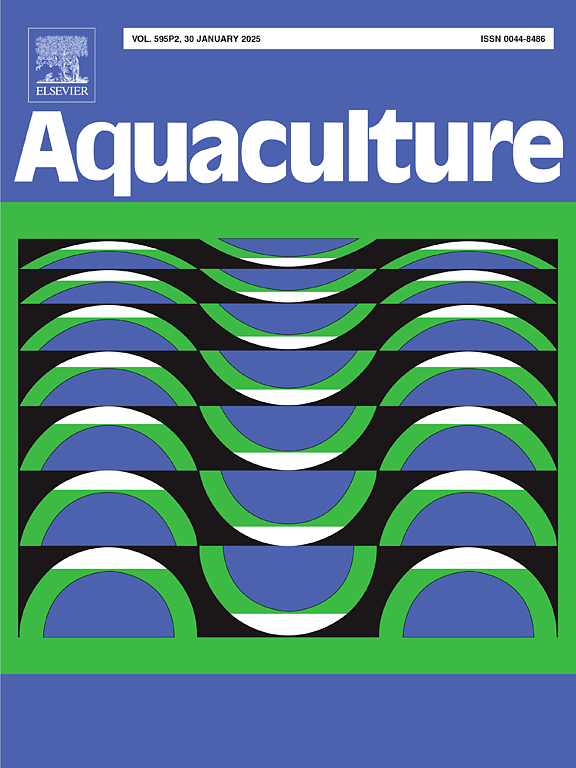Establishment of an indirect ELISA procedure for detecting Aeromonas infections on the basis of flagellar cap protein FliD antigen in Cyprinus carpio
IF 3.9
1区 农林科学
Q1 FISHERIES
引用次数: 0
Abstract
Cyprinus carpio is a vital part fisheries resource breed and one of the world's most valuable commercial fish. Aeromonas is a very important aquatic pathogen, which causes high mortality and great financial losses in aquaculture. It is necessary to establish a rapid, specific and sensitive diagnostic method of immunoglobulin M (IgM) antibodies for the detection of Aeromonas infection in C. carpio. In this study, the recombinant FliD protein was utilized as the coated antigen to develop a novel indirect ELISA (enzyme-linked immunosorbent assay) for the detection of specific anti-Aeromonas IgM antibodies in C. carpio. The established FliD-ELISA showed high specificity and sensitivity, and according to the cut-off value, it can detect the anti-FliD antibody at a maximal dilution of 1:800 in C. carpio serum The coefficient of variation (CV) of the FliD-ELISA was less than 10 % for both intra- and inter-assay, which meets the requirements. Compared with the clinical serum samples, the established FliD-ELISA and commercial Fish pathogenic Aeromonas ELISA kit displayed a similar compliance rate of 95.24 %. The findings of the experiments show that the newly developed FliD-ELISA is a convenient and reliable method for detecting anti-Aeromonas antibodies, and it could monitor the epidemiology of Aeromonas infection in C. carpio in aquaculture.
求助全文
约1分钟内获得全文
求助全文
来源期刊

Aquaculture
农林科学-海洋与淡水生物学
CiteScore
8.60
自引率
17.80%
发文量
1246
审稿时长
56 days
期刊介绍:
Aquaculture is an international journal for the exploration, improvement and management of all freshwater and marine food resources. It publishes novel and innovative research of world-wide interest on farming of aquatic organisms, which includes finfish, mollusks, crustaceans and aquatic plants for human consumption. Research on ornamentals is not a focus of the Journal. Aquaculture only publishes papers with a clear relevance to improving aquaculture practices or a potential application.
 求助内容:
求助内容: 应助结果提醒方式:
应助结果提醒方式:


